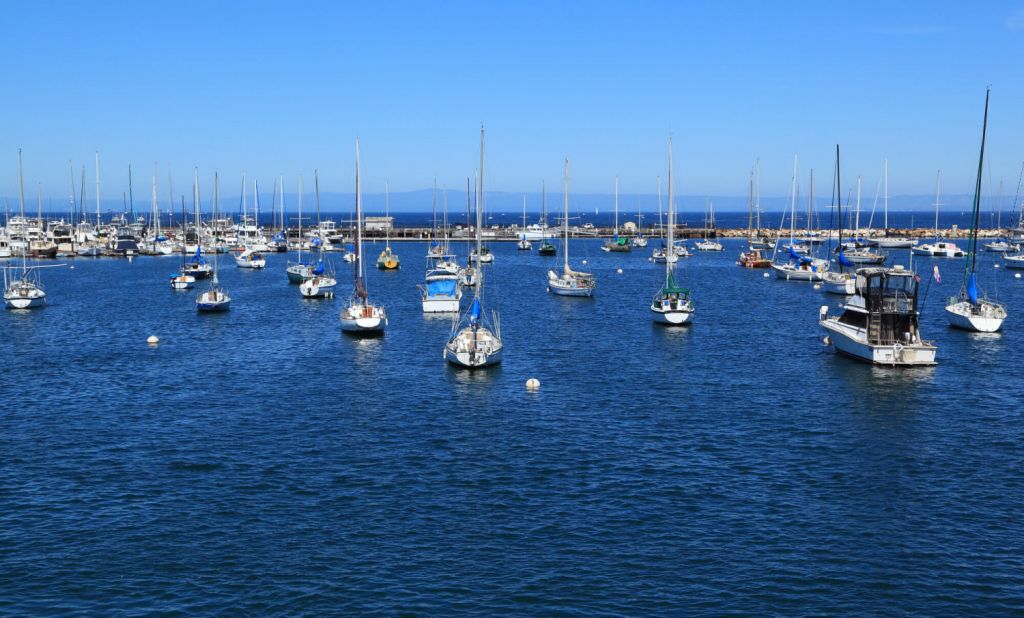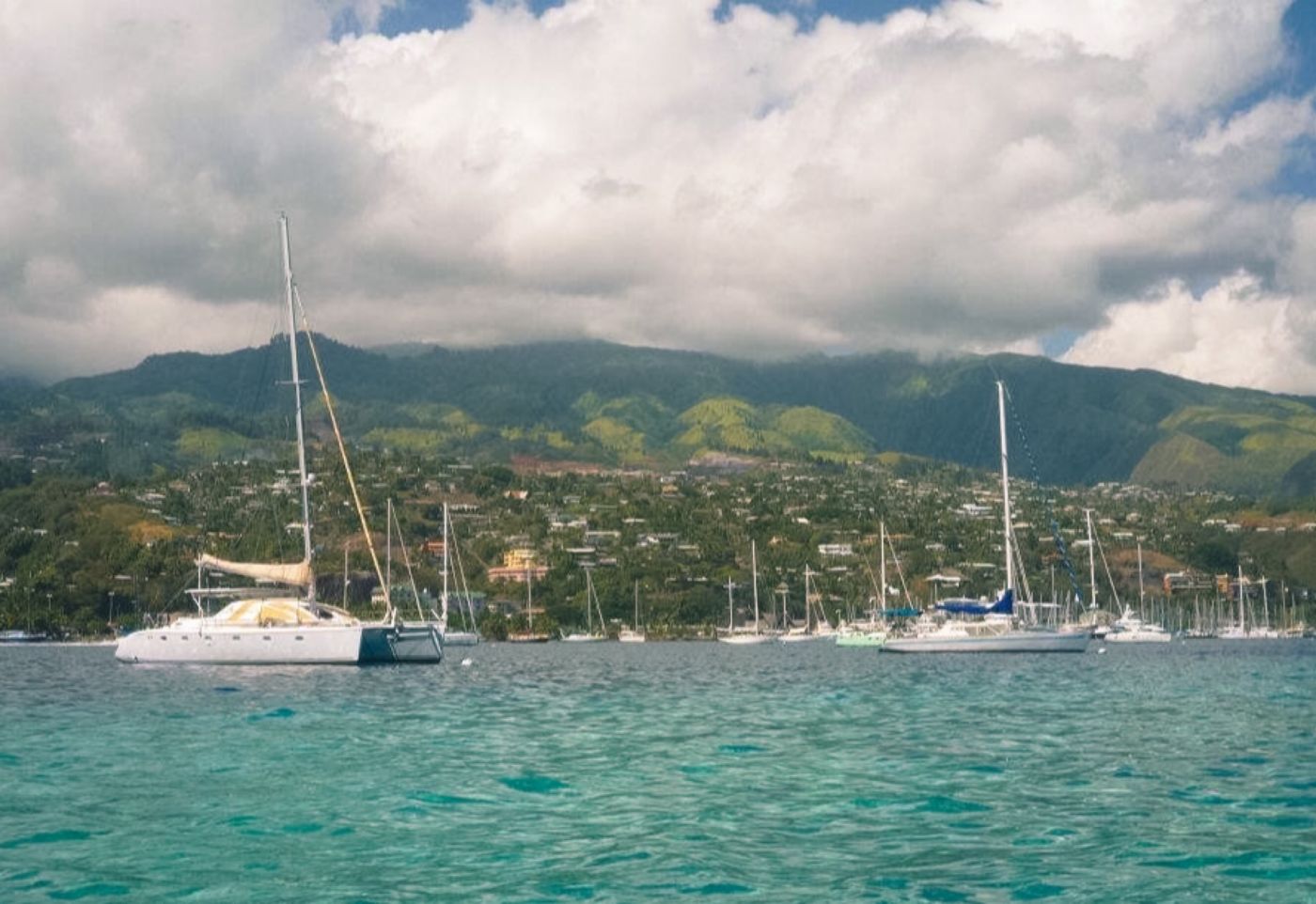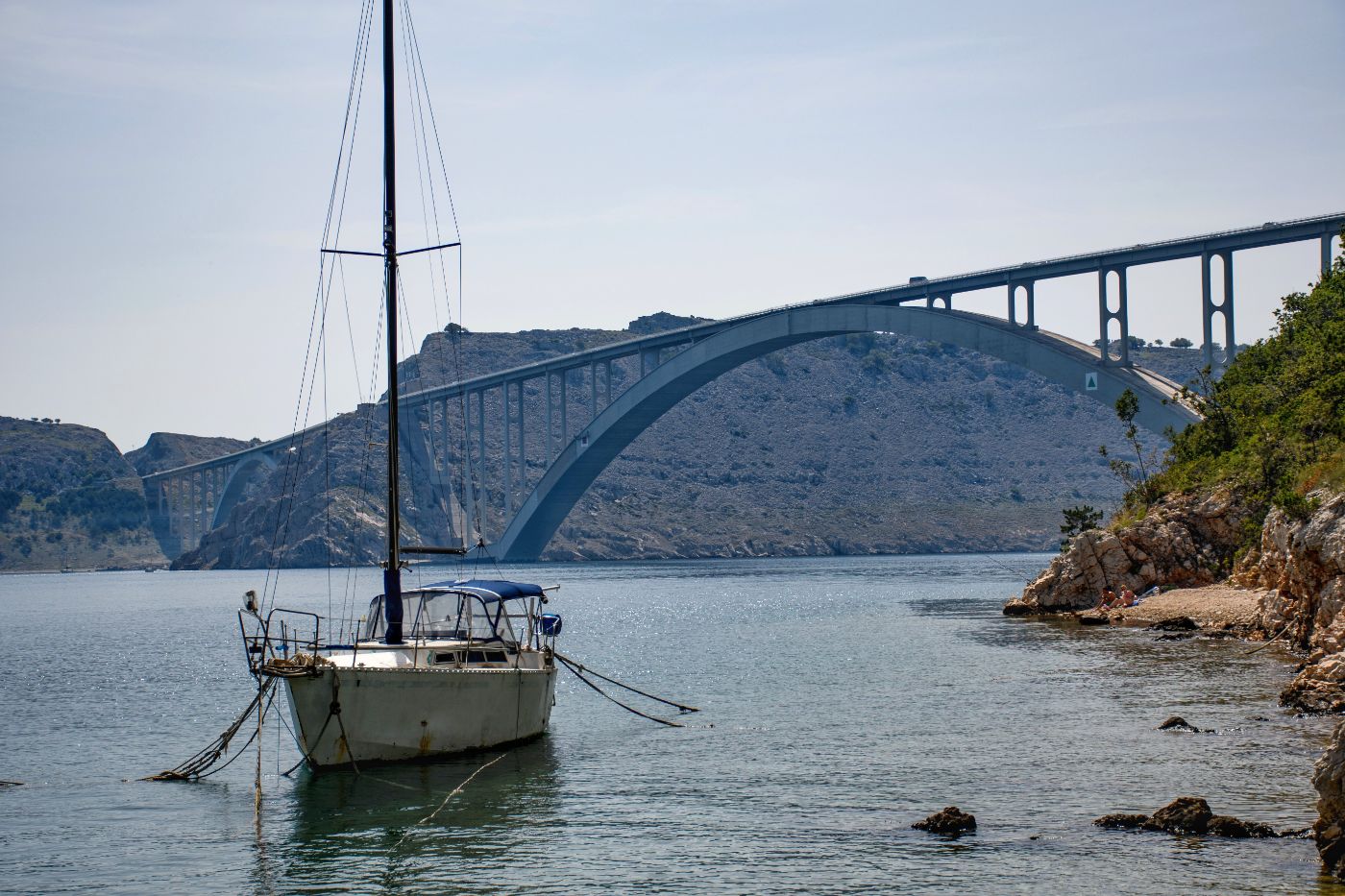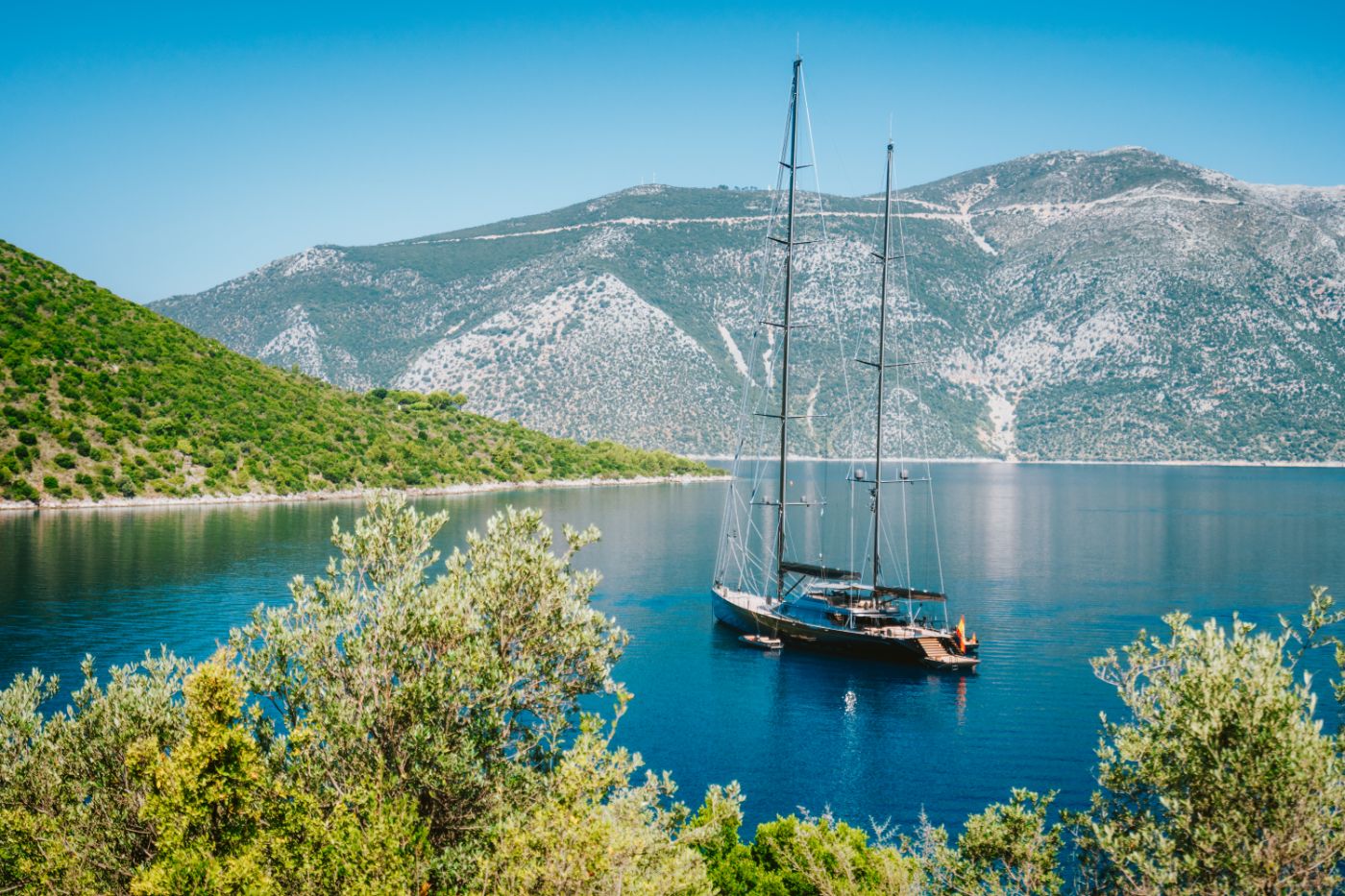Boat Anchoring Rules & Laws: Canada, CA, FL, WA & more
If you've ever anchored out and gotten a knock on your hull, to find it's the local water police telling you to move, it's not a great experience. If you've ever had a problem with someone anchored near you and you find out the harbor master can not help, well, that's also not so much fun.
How can you make sure you won't have any problems when you anchor? Every country has different laws on anchoring, and larger countries with multiple jurisdictions will usually have local or state laws that affect your ability to pick a suitable spot to anchor. So you need to check before you anchor.

It's a complex topic, but we can sort out some basics for you. Even if you can't learn the law for every spot of water out there, at least you may know when checking the laws before you drop the hook is a good idea.
What are the rules for anchoring a boat?
Most of what we think of as the "rules" for anchoring your boat near others are more courtesies than hard and fast rules and have no legal basis for enforcement. This is important when dealing with other boaters, because if someone anchors too close to you, your rights may not be as much as you think.
Where is it legal to anchor a boat?
Since most waters are legal for anchoring, it is easier to start with where you may not anchor, because some anchoring bans are almost universal.
Some of these are rules and guidelines in the COLREGs (Collision Regulations), the international agreement on safe marine traffic and conduct. Most states and higher authorities have laws reinforcing these. And if you damage your boat at anchor, your insurance company may deny claims if they can prove an intentional violation of the COLREGs or local laws.
These restricted spaces are in addition to any specific anchoring bans imposed by local authorities.
Where is it usually illegal to anchor?
- Marked Channels should never be blocked, especially if it's a narrow entrance or cut from protected waters to the open ocean. Boats often travel at high speed in channels, and safe navigation outside the channels is restricted. A boat anchored in the channel is a hazard. COLREGs Rule 9 (g) - "Any vessel shall, if the circumstances of the case admit, avoid anchoring in a narrow channel."
- Commercial Shipping areas, usually marked for turning large ships and ships under tow or tug, are prohibited. They will usually show these on charts, but common sense should dictate that you don't want to anchor anywhere near where tugs and cargo ships are operating.
- Near marinas, ramps, and beaches. Most jurisdictions have rules about anchoring too close to marine service areas or places with lots of traffic or people. There's usually a minimum distance away to be observed for anchoring.
- Cable Crossing Areas are usually marked on charts, and may have marks on shore showing the high-risk areas.
- Permanent Mooring Fields rarely allow for anchoring in between moorings. And you wouldn't want to anyway, since your ground tackle will get fouled the first time the wind shifts.
- Protected waters. Some waters may be under state or federal protection for a variety of reasons. These could be anything from protecting seagrass beds, shellfish beds, specific fishing grounds, or marine mammal protection zones. Sometimes it’s prohbited even to enter, like the manatee sanctuaries in Florida, but most of them you can move through. They will usually be marked with buoys and may be on charts.

Local Anchoring Prohibitions
Many waterfront towns and cities have very specific laws about where you may anchor and for how long. There are constant court battles over the jurisdiction and rights of local authorities over federal waterways in the U.S., but courts are generally coming down on permitting the local governments to restrict waters immediately near their towns.
There may be many reasons towns may do this. Many visiting boaters come ashore and spend money in towns, and recreational boating is a boon to these locations. But some towns have problems with boats anchoring permanently, and they do not want a fleet of liveaboards anchored off town. Abandoned and disabled vessels pose an environmental and safety hazard the towns do not want.
Some waterfront homeowners have also lobbied to restrict anchoring in the waters off their property, making anchoring off some more exclusive communities almost impossible.
The important point isn't WHY anchoring may be banned, but whether it is. Before you head for a new destination, if you aren't sure about anchoring, spend some time learning the local laws.
Where else shouldn't you anchor?
When picking a spot to anchor, especially for the night, there are a few guidelines to make your time more pleasant and say. Outside of the prohibited areas discussed above, avoid a few other types of anchorages.
- Near channels may be uncomfortable with wakes, even if you aren't in the channel you make get some rock-and-roll.
- Open, unprotected waters can quickly get uncomfortable or dangerous if foul weather comes up.
- Too close to homes. There may be no law about it, but homeowners who feel you’re violating their space can make your stay unpleasant. Note local customs; in some areas, anchoring in close is common, but in others you will stand out.
Check out our article on How to Anchor a Boat for suggestions in finding a good place to drop the hook.

How long can you anchor in one place?
Most anchoring restrictions specify how long you can stay. Anchoring is permitted, but you need to move on after a few days. But without rules in place, how long can you leave your boat?
The simple answer is as long as it's allowed, but there are more things to consider as we discuss in more detail in this article.
How do you know where you can anchor a boat?
Before we sail anywhere, we do a little research and planning. You have a wealth of information at your fingertips before you head out for a sail, so look before you leave to make sure the spot you plan to stop will work.
Charts
Many charts show legal or designated anchorages with a small anchor symbols. It's more common to see anchoring prohibitions and reserved areas, which imply that unmarked areas are okay for anchoring even if they aren't designated for it.
"General Anchorages" are for anchoring, but you may find them full of moorings in some places. In a designated anchorage, you don't need to use an anchor light.
In the chart below, you can see two "prohibited" zones. The one to the north is reserved for water sports, the southern one is reserved for mooring fields. Looking at the marks, you'll a channel coming through the cut and across the harbor - no anchoring there. The primary anchorage is under the words "Great Salt Pond," bounded by the no-anchor zone to the north, the channel line between GC "11" and GC "13" to the west, the shallows to the east, and the Mooring Field A to the south. Shallow draft boats can also anchor between Mooring Field A and Indian Head Neck, but do need to mind the sea grass ("Grs" mark).

Read the charts and look for markers and designations when you arrive. From the chart above, they mark the prohibited water sports area to the north with a string of buoys, and the harbormaster will ask you to move if you drop on the wrong side of the line.
Cruising Guides
Cruising guides are one of your best sources of anchorage information. Whether in print or online, you'll find loads of information about not only where you can and can not anchor, but also which anchorages are best for which conditions.

Other Boats
The presence of other boats is a tip - but not a guarantee - that a spot is allowed for anchoring. Remember, there's no guarantee those other skippers know the laws and rules any better than you do, and they may just be there between sweeps of the local harbor authorities. While it's not safe to assume other boats anchored are in a suitable spot, it is an hint you may have found the anchorage you're looking for.
When you see other boats anchored, try to get a sense from them how much rode they have out for the depth, and how they're moving in the wind and current. When you pick a spot to anchor, you don't want to encroach on them.
"Right of Swing" and anchoring etiquette. It's a common assumption that the first boat in the anchorage has the "rights" over later arriving boats. While this is true from an etiquette perspective, there is no law to this effect. Someone can anchor on top of you, and if you deem the situation unsafe, you need to move if you can not convince them to anchor safely.
As a skipper, under COLREGs if you recognize a dangerous situation, it is on you to fix it. Local authorities cannot move a boat who has made you uncomfortable.
And take care when you drop anchor to respect other's boundaries.
Anchoring laws for selected countries and states
While an exhaustive list of anchoring laws is beyond this article, some examples of the rules and regulations you may run across will help you make the right determination when you decide where to stop. If you have questions, look up the local authority for where you want to stop for the night, since most anchoring restrictions are local ordinances and enforced by harbormasters or local police.
They aim many local anchoring ordinances at full-time liveaboards, not visiting boats, and impose time limits to keep boats from parking permanently in one spot. Most states have basic laws about anchoring in channels, in mooring fields, and too close to docks, piers, and marinas.
Canada
Canada views anchoring in any safe place as a common law right. Port control and harbor masters may direct or restrict some areas, but there are few restrictions on anchoring in most places for “a reasonable time, for a reasonable purpose.”
But there are a few restrictions. For example, the city of Vancouver requires anchoring permits specifically for False Creek, the anchorage in front of the city. There's no charge for the permit, but it limits anchoring to 14 days out of every 30 during high season and 21 days out of 40 during low season.

United States
With fifty different states and dozens of waterfront municipalities on every stretch of coast, the U.S. can sometimes be a maze of regulations about where you can and can not anchor. Most coastal states on the ocean have laws of some sort, and you can usually anchor easily. However, some states have more restrictions and you'll need to pay more attention.
California
Every major municipality on the water in California has restrictions on anchoring. A few of them include:
- Humbolt Bay (Eureka) - 72 hour maximum anchored limit for any boat.
- Monterey - Boats may not anchor more than 30 days in any six-month period.
- San Diego - 72 hour anchoring restriction, except in the cruiser's anchorage, which is open to non-local boats for 90 days in any 12 months period.
- San Francisco - has many anchorages with different rules. Some require permits, some have maximum stays.
- Los Angeles / Long Beach - no boat may anchor over 10 days without permission from the port captain.
Florida
In the past few years, Florida has introduced some aggressive anti-anchoring legislation to fight abandoned and non-functional boat problems. Statewide, municipalities may create "Anchorage Restriction" zones, where you may spend only 45 days in any six-month period.
The new law grandfathers older restricted areas, so be careful to check municipal laws where you plan to anchor as more restrictive zones exist.
Washington State
Washington state restricts anchoring on state owned aquatic lands "in the same area" to 30 consecutive days in every ninety-day period, and only 90 days in any year. "In the same area" means within five nautical miles. There are exceptions, and this rule doesn't apply everywhere.
Georgia
In early 2020, Georgia put some heavy restrictions on anchoring, which affect the Intracoastal Waterway and cruisers on the Loop Route. It is illegal to anchor within 1,000 feet of any structure, which may be a dock, marina, bridge, pier, wharf, etc. except for certain "marina zones" between 300 and 1,000 feet of certain designated marinas.
Anchoring is prohibited in certain estuarine areas, and other areas may require a permit.
Massachusetts
Massachusetts doesn't have any restrictive statewide ordinances, however, local regulations govern some of the more popular areas. Here are a few examples:
On Martha's Vineyard, Katama Bay in Edgartown is closed to anchoring unless the Harbormaster explicitly opens when northerly winds make the regular anchorage untenable. Vineyard Haven restricts sleeping aboard anchored vessels in town waters to three nights and requires vessels to be checked every 24 hours.
Fall River restricts anchoring to 24 hours and the skipper must be available to move the boat for bad weather.
New Jersey
While New Jersey does not have a lot of local anchoring rules, there is a provision at the state level for determining if a vessel is "abandoned" if it's anchored in one place for 30 days or longer. The determination is vague, and a boat with people on it can make an obvious case for it being not abandoned.
Outside North America
Political divisions and subdivisions in other parts of the world give rise to many controls and laws on anchoring, and you should check anywhere you cruise to make sure your plans work. Here are a few examples which you may run across.

The Mediterranean
The countries in the norther Mediterranean are notoriously tricky about anchoring. Many have limitations on anchoring, banning it from distances of 150 meters up to 1,000 meters from beaches, marinas, and other traffic areas. The tricky part is many of these beaches aren't well marked as being reserved, and local officials often cite first-time offenders with no warnings or instructions.
It's always a good idea to ask about restrictions and rules when you clear in, and be very careful of any demarcated Posidonia seagrass reserves.
Australia
Each Australian state has its own laws, and within each state there may be special regulatory zones with different laws in effect. In Queensland, the Gold Coast Seaway has a complex system of "zones" where in some zones you may stay only one night in a thirty-day period, and others were you can stay only a week at one time, but you can move at least a mile away and reset the week counter.
New South Wales, on the other hand, restricts the total time than any boat can spend at anchor in the state to 90 days. And a boat can not be in on "location" for over 28 days. The definition of "location" is very broad, for example, the officials in Sydney Harbour consider the entire harbor to be one location even though it has many distinct bays.
The Caribbean
There are very few regulations on anchoring in the Caribbean, but it surprised us to find in Antigua there are daily harbor fees to anchor in English Harbour and Falmouth. Nowhere else on Antigua had fees, but that surprise just reinforced that you should always check ahead to learn the rules/h
Did you find the answer to your specific question?
👍 1 👎 0
Comments
Charles
I’d enjoy getting in touch re: your world sailing experiences. In a short quantity of time, I plan on purchasing a Beneteau, Baltic or Y-Yacht (Y-7 or Y-9 preferred) and doing some serious sailing starting in either the Americas or Europe BUT Asia is a very desirable destination set. Email me @ charles.young33@icloud.com to connect
Leave a comment